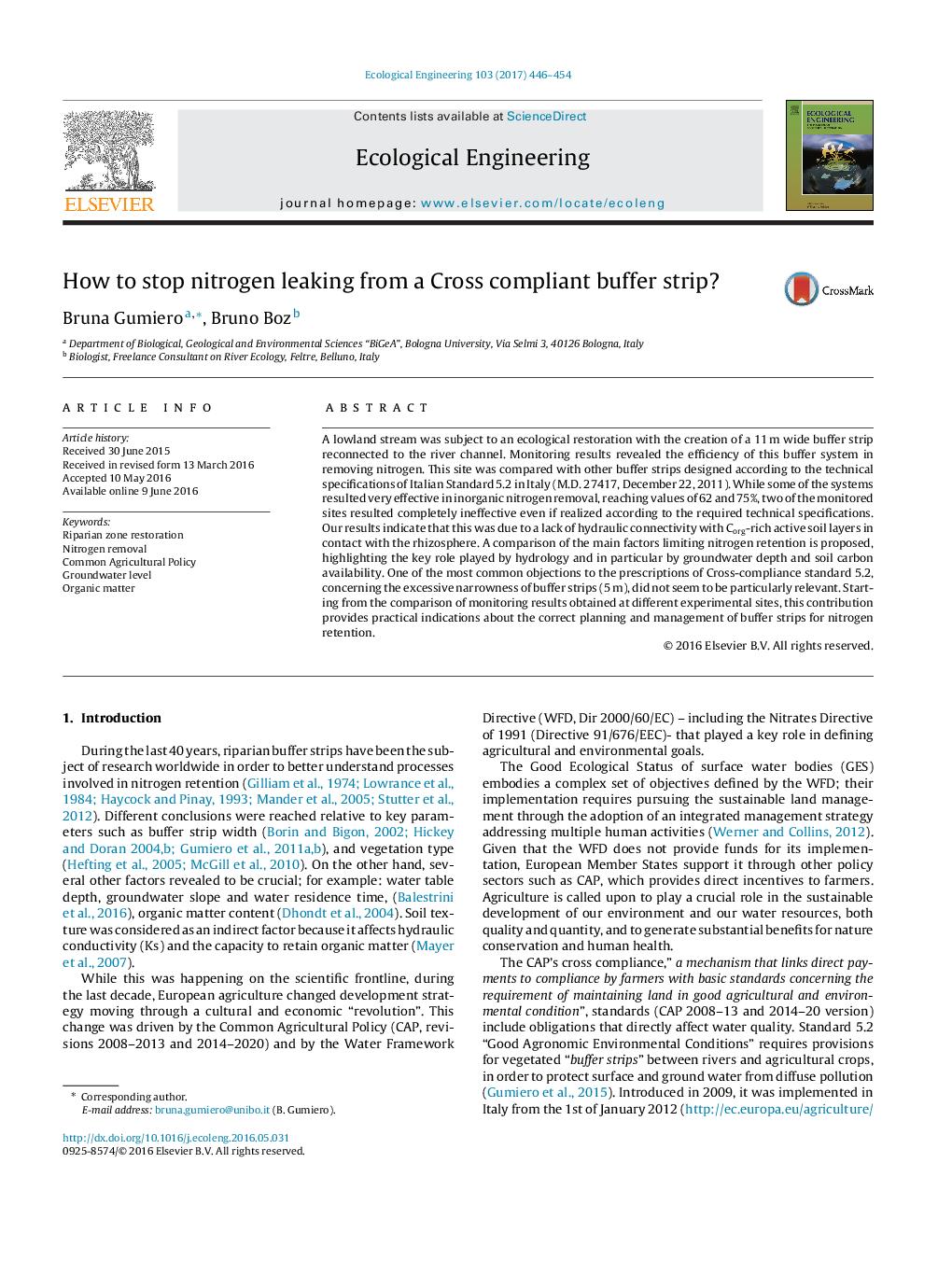| کد مقاله | کد نشریه | سال انتشار | مقاله انگلیسی | نسخه تمام متن |
|---|---|---|---|---|
| 5743899 | 1412323 | 2017 | 9 صفحه PDF | دانلود رایگان |
- Hydrological dynamics and nitrogen transformation in a restored buffer strip.
- The key role of groundwater depth.
- Comparison with other sites realized following the Cross-compliance stand 5.2.
- Bringing together science and policy for a better management of buffer strips.
- Linking river incision processes with nitrogen removal efficiency of buffer strips.
A lowland stream was subject to an ecological restoration with the creation of a 11Â m wide buffer strip reconnected to the river channel. Monitoring results revealed the efficiency of this buffer system in removing nitrogen. This site was compared with other buffer strips designed according to the technical specifications of Italian Standard 5.2 in Italy (M.D. 27417, December 22, 2011). While some of the systems resulted very effective in inorganic nitrogen removal, reaching values of 62 and 75%, two of the monitored sites resulted completely ineffective even if realized according to the required technical specifications. Our results indicate that this was due to a lack of hydraulic connectivity with Corg-rich active soil layers in contact with the rhizosphere. A comparison of the main factors limiting nitrogen retention is proposed, highlighting the key role played by hydrology and in particular by groundwater depth and soil carbon availability. One of the most common objections to the prescriptions of Cross-compliance standard 5.2, concerning the excessive narrowness of buffer strips (5Â m), did not seem to be particularly relevant. Starting from the comparison of monitoring results obtained at different experimental sites, this contribution provides practical indications about the correct planning and management of buffer strips for nitrogen retention.
Journal: Ecological Engineering - Volume 103, Part B, June 2017, Pages 446-454
